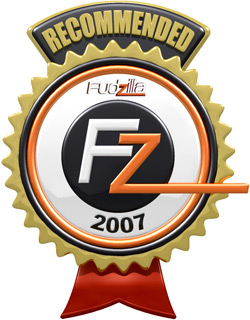We tested the Zotac AMP on our standard test rig and we compared it to a couple of interesting cards. 8800 GTS with 128 Stream processors is still not available, but it’s definitely going to be faster than reference 8800 GT card. We’ll see whether Zotac 8800 GT AMP will be able to compete with the new card that we’re expecting next week.
Testbed
Motherboard:
EVGA 680i SLI (Supplied by EVGA)
Processor:
Intel Core 2 Duo 6800 Extreme edition (Supplied by Intel)
Memory:
OCZ FlexXLC PC2 9200 5-5-5-18 (Supplied by OCZ)
while testing CL5-5-5-15-CR2T 1066MHz at 2.2V
PSU:
OCZ Silencer 750 Quad Black ( Supplied by OCZ)
Hard disk:
Seagate Barracuda 7200.9 80GB SATA (Supplied by Seagate)
CPU-Cooler:
Freezer 7 Pro (Supplied by Artic Cooling)
Case Fans:
Artic Cooling - Artic Fan 12 PWM
Artic Cooling - Artic Fan 8 PWM
3DMarks

3D Marks report Zotac 8800 GT AMP to be the best card. At default settings it leaves Geforce 8800 GTX in the dust. The scenario is the same in gaming because 8800 GT cards perform great at lower resolutions and default settings.
As long as you’re not gaming at ultra-high resolutions, there’s no real need for buying 8800 GTX cards – 8800 GT will prove to be more than enough. Zotac AMP is an overclocked 8800 GT card running at 700MHz core and 2000MHz memory, and the Shader speed is 1700MHz. This, more or less, shows you what you should expect from this card.
Gaming

1024x768 and 1280x1024 are reserved for the 8800 GT AMP Edition. The card outperforms the reference card by 11%, and it even beats 8800 GTX. At 1600x1200 and antialiasing on, AMP beats reference 8800 GT by 13%, and the score is similar at 2048x1536. At this resolution 8800 GTX beats Zotac 8800 GT AMP by 5 frames, and reference 8800 GT by 13 frames.
As we’ve already said, 8800 GT is great for standard gaming resolutions. However, in some games the drivers don’t perform very well, so no matter what game you choose, turning antialiasing on will result in a lousy frame rate. Crysis is a typical example – gaming is great, but steer clear of high detail settings on high resolutions.

In Crysis, the cards score somewhat evenly, but at 1024x768, Zotac 8800 GT AMP proudly takes the throne.

World in Conflict is just as graphics-hungry as Crysis is. Higher resolutions with antialiasing on are smoother on 8800 GTX, but at lower resolutions the difference is almost nonexistent. In this game, Zotac 8800 GT AMP shows no significant advantage over the reference design card.

In F.E.A.R., 8800 GT AMP shines yet again, and it significantly outperforms the reference cards. We see a performance advantage of up to 18%. 8800 GTX leads the way, but 8800 GT AMP is the closest to these results. At 1600x1200, 8800 GTX beats 8800 GT AMP by 21%, and reference 8800 GT by 37%.
Temperatures

Although reference cards run at a lower speed, temperatures on Zotac 8800 GT AMP are cooler by a couple of degrees Celsius. We marked the cards as “silent” because we set cooling to AUTO, and the fans were quiet at all times. Maximum fan speed made some noise, but it cooled the card to 60-65 degrees Celsius, which is much better than the results in the above table. It is probably best to set the fan speed manually, and find an optimum compromise between the noise and the cooling effectiveness.
Conclusion
Zotac did a great overclocking job with the 8800 GT AMP. The best part of this offer is the price, and it shouldn’t be much higher than the reference cards, but due to severe unavailability of these cards, the prices are indeed too steep.
The card is overclocked from default 600MHz to 700MHz and this is the first card to reach these core speeds. Other partners have only recently showcased their overclocked cards, but it’s unlikely that you will find a faster card. Memory is clocked at 2000MHz and Shader processors at 1700MHz.
In order to improve the cooling Zotac altered the reference cooler design and opted for a tad bigger fan, which didn’t affect the size. The card is quiet and a bit cooler than the reference one, although the speeds are significantly overclocked.
There are no games in the box, although some partners consider this to be a must, but on the other hand the price is just a tad higher than reference cards.
Finally, this is a great product for a great price, and it proudly earns Fudzilla's Recommended award.

